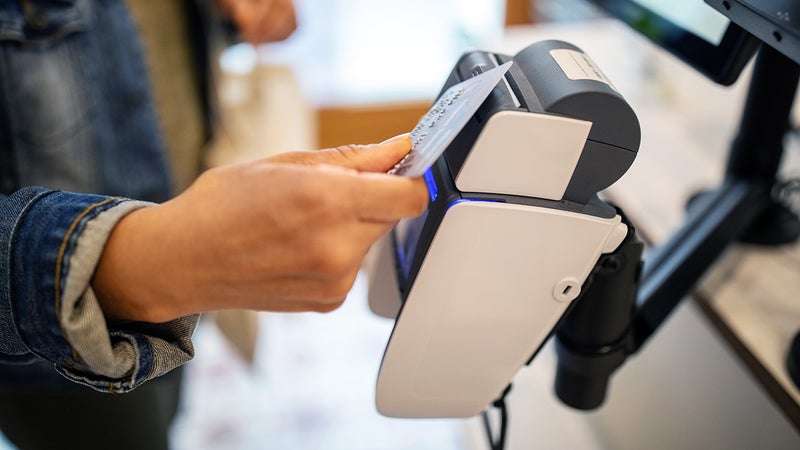How to build credit with a secured credit card

The Bankrate promise
At Bankrate we strive to help you make smarter financial decisions. While we adhere to strict , this post may contain references to products from our partners. Here's an explanation for .
Key takeaways
- A secured credit card requires you to deposit to offset the risk that you will not make your payment.
- These cards typically come with low credit lines and high interest rates.
- Using your secured credit card responsibly, including keeping your balance low and making on-time payments will help you build a positive credit history.
- Once you use a secured credit card to build up your credit, you could move up to an unsecured card offering a higher credit limit.
If you have bad credit or a limited credit history, you’re likely searching for effective ways to boost your credit score quickly. One powerful tool to consider is a secured credit card.
Secured credit cards provide a small line of credit in exchange for an affordable, refundable security deposit. Secured cards are one of the best ways to build credit when traditional credit options are out of reach. To maximize the benefits, you need to know how to get the most out of these credit-building tools.
How secured credit cards work
A secured credit card offers many of the benefits of a standard credit card — but you have to put down a security deposit first.
Lenders might wonder if you will be a risky borrower if you have poor credit or a limited credit history. A security deposit protects your lender in case you default on your credit obligations. If you manage your line of credit responsibly, you’ll eventually receive your security deposit back.
How much will your security deposit be? It depends. Some secured credit cards allow you to open a line of credit after depositing less than $50. However, most cards require you to match your credit line with an equivalent deposit. For example, if you want a $500 line of credit, you must pay a $500 deposit.
People often use secured credit cards to build their credit scores. Secured cards usually come with low credit limits and high interest rates. This makes it difficult to use secured credit cards to finance large purchases — and very expensive if you decide to carry a balance.
How to use a secured credit card to build credit
Do secured credit cards build credit? Yes, depending on how you use them. To build credit with a secured card, you’ll need to understand the fundamentals of building good credit. Start with these six tips.
1. Choose the right card
First, you need to choose the right secured credit card. To build your credit, you’ll need a card that reports to all three major credit bureaus — Experian, TransUnion and Equifax. This ensures that on-time payments are reflected on your credit report.
As you compare secure credit card options, watch out for high interest rates and fees; some cards can be pricy. Also look for a card that will let you upgrade to an unsecured card later so you can keep growing your credit.
2. Have your deposit ready
When you submit your credit card application, make sure you’ve already saved enough money to make the required deposit. The issuer won’t open your account until this is paid, and if you wait too long, you might lose your opportunity to get the card. You should try to open the account as soon as the lender lets you because the application itself can slightly lower your credit score.
3. Make timely payments
Making your payments on time is critical. Your payment history is the biggest factor in your credit score calculation.
“Even one 30-day late payment could really tank your score,” says Ted Rossman, a senior industry analyst at Bankrate.
Consider setting up automatic payments to avoid potential issues so you never miss a due date.
4. Keep your balance low
Your credit card utilization — or the amount of available credit you’re using, has a significant impact on your credit score. Use your secured card to make small everyday purchases and pay your statement balance in full every month.
However, avoid maxing out your credit card. Even if you have a low utilization rate on other cards, maxing out just one card could harm your credit score.
5. Pay off your debts
If you’ve got other debts, paying them off can boost your credit score. While using your secured card responsibly, reduce your other card balances. Lowering your debt helps your credit utilization ratio and shows lenders you’re serious about managing your money.
6. Monitor your credit score
Keep an eye on your credit score so you can monitor your progress. Check if your credit card or bank offers free credit score monitoring services. Also, regularly review your credit report to make sure everything is correct.
Errors on your credit report could cause lenders to deny your application or offer a higher-than-average interest rate. Checking your credit report every few months can help you catch problems early. If you notice any errors, contact the credit reporting agency to report the discrepancy immediately.
How a secured card can impact your credit
How much will a secured credit card raise your credit score? While it’s impossible to say exactly how much your credit score will improve, using a secured card can boost your credit score relatively quickly — typically in under six months.
This is especially true if you focus on the five factors that make up your credit score:
- Payment history
- Credit utilization
- Length of credit history
- Credit mix
- New credit
In addition to making payments on time and keeping credit utilization rates low, avoid unnecessary hard credit inquiries that can lower your credit score.
As your credit improves, so will your length of credit history — and as you become eligible for more lines of credit, you’ll be able to build the credit mix that might someday help you earn a perfect credit score. However, if you have significant problems on your credit report, you may consider working with a credit repair agency to help expedite the process.
When to upgrade to an unsecured credit card
When should you switch from a secured credit card to an unsecured credit card? Your credit card issuer may automatically transition you to an unsecured credit card after you’ve proven you can use your secured credit card responsibly.
If you have the Discover it® Secured Credit Card, for example, you might graduate to an unsecured Discover card with just six consecutive on-time payments. When a credit issuer upgrades you from a secured card to an unsecured card, your security deposit will be refunded — and you may even receive a higher line of credit.
In other cases, you’ll need to close out your secured credit card before you can receive your security deposit back, and you may need to apply for an unsecured credit card on your own.
Read the fine print before you apply for a secured credit card to learn the rules about security deposit refunds and graduating to an unsecured card.
If your credit card issuer doesn’t automatically consider you for an unsecured credit card, get at least six months of positive credit habits under your belt. After, consider applying for one of the best credit cards for people with bad credit or fair credit, depending on your new credit score.
The bottom line
Using a secured credit card is a smart way to rebuild your credit. By following these tips, you can establish a positive credit history, manage your finances more effectively and smoothly transition to an unsecured credit card.
With time and responsible use, you can start getting the advantages that come with having strong credit, such as better loan terms, lower interest rates and expanded financial opportunities.
Frequently asked questions
-
Failing to make the minimum payment on your secured credit card will negatively impact your credit score. In addition, missing a payment or paying late can result in late fees and higher interest charges.
To avoid these issues and continue building good credit, don’t charge more than you can comfortably pay back. -
Yes, the card company may keep your deposit if you default on your credit card payments. In this case, the issuer can use your deposit to cover the outstanding balance, and you may receive only a partial refund or no refund at all, depending on how much you owe.


